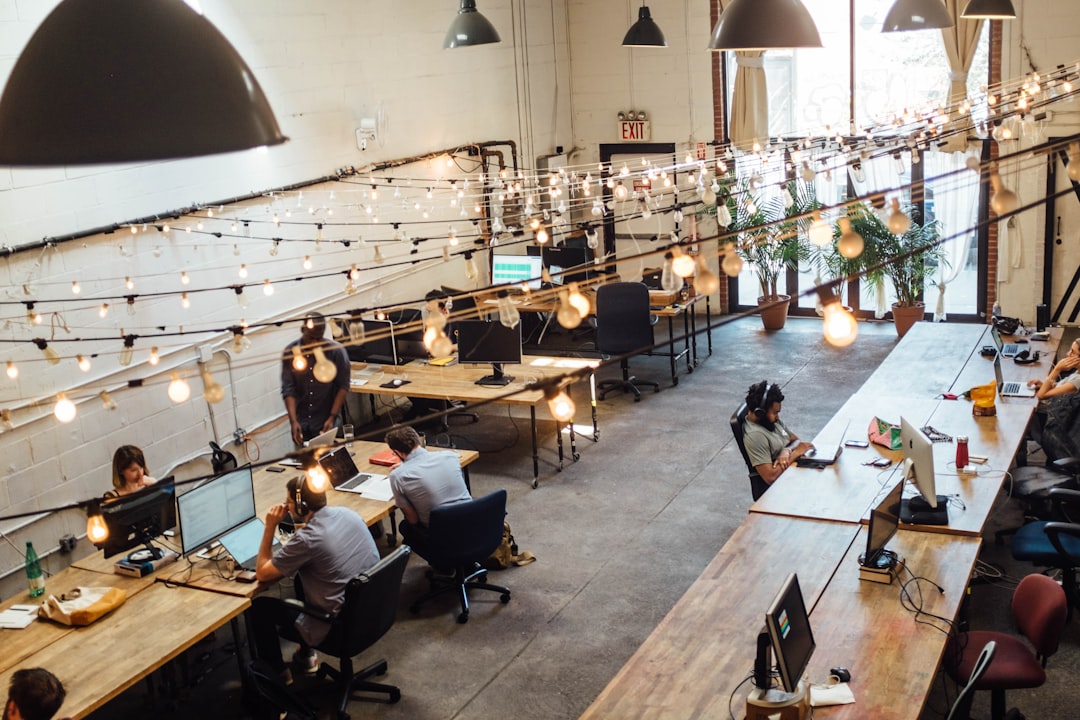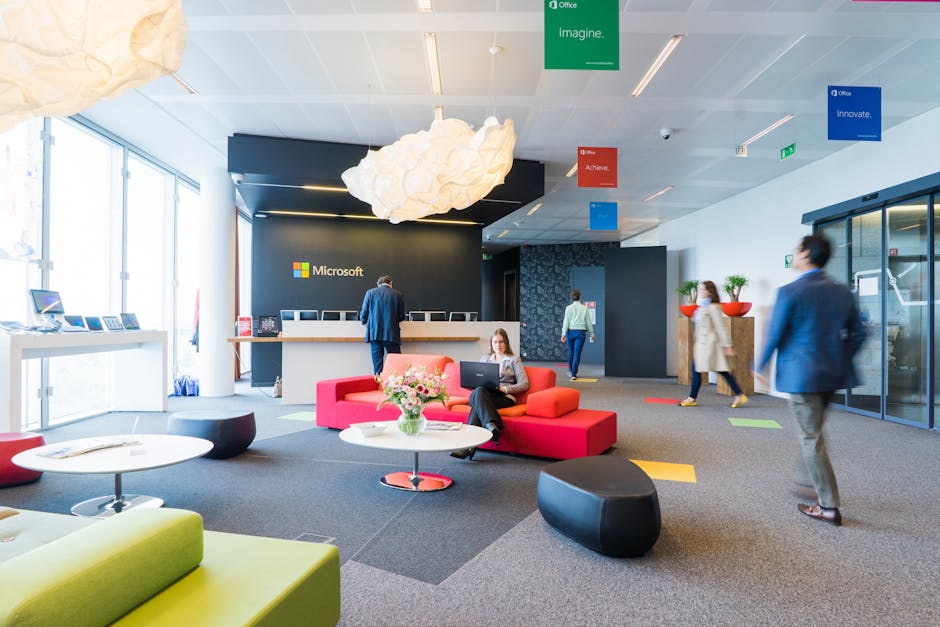Revolutionizing Workspaces: Innovative Hybrid Office Layout Ideas for the Modern Era
“As businesses adapt to the new normal, hybrid office layouts are becoming essential. This article explores creative design concepts that cater to both remote and in-office work, focusing on flexibility, collaboration, and employee well-being. From hot-desking hangouts to immersive telepresence boardrooms, learn how to create a dynamic workspace that meets the evolving needs of your workforce. ”

Revolutionizing Workspaces: Innovative Hybrid Office Layout Ideas for the Modern Era
In the wake of the global pandemic, the concept of the traditional office has undergone a dramatic transformation. As companies embrace hybrid work models, the need for innovative office layouts that cater to both remote and in-person work has become paramount. This article explores cutting-edge hybrid office design ideas that can help businesses create dynamic, productive, and employee-centric workspaces.

The Rise of Activity-Based Working (ABW)
Activity-Based Working (ABW) is a workplace design strategy that provides a variety of spaces specifically designed to accommodate different tasks. This approach has gained traction in recent years, especially in the context of hybrid work environments. A study conducted by professors at top Australian and Chinese architecture schools found that ABW workspaces yielded significantly higher satisfaction results in key areas such as perceived productivity, health, and ergonomics.
Key Benefits of ABW:
- Increased flexibility for employees
- Enhanced collaboration opportunities
- Improved space utilization
- Better alignment with diverse work styles
1. The Hot Desk Hangout: Flexibility Meets Functionality
Hot desking is a facilities assignment practice where most employees don't have permanent offices. Instead, they reserve workspaces that fit their tasks when they need to come into the physical office. This concept is particularly well-suited for hybrid workplaces.
Features of a Hot Desk Hangout:
- Individual desks with flexible partitions
- Small conference areas for team collaboration
- Soundproof glass doors for privacy when needed
- Large monitors for teleconferencing with remote team members
By implementing a hot desk system, companies can optimize their office space while providing employees with the flexibility to choose workspaces that best suit their needs on any given day.

2. The Maker Space: Fostering Innovation and Tech Support
In a hybrid office, a centralized Maker Space can serve as a hub for IT support, tech training, and creative innovation. This area can be staffed by IT professionals who can assist with hardware and software issues, provide training, and support the creation of presentation materials.
Elements of an Effective Maker Space:
- Reception desk for walk-up support
- Equipment drop-off and pick-up area
- Training area for small group sessions
- Creative workspace for innovative projects
Companies like Microsoft and Quartz have embraced makerspaces as springboards for innovation, often designing them to reflect the company's culture and values.
3. Café Collaboration: Informal Meetings and Casual Connections
Creating a café-like atmosphere within the office can provide a relaxed environment for informal meetings, casual conversations, and impromptu brainstorming sessions. This space can help recreate the social aspects of office life that many remote workers miss.
Key Features of a Café Collaboration Area:
- Self-serve food and beverage station
- Bar-style seating for quick meetings
- Large screen monitor for video conferencing
- Comfortable lounge seating for relaxed conversations
Google has recognized the importance of such spaces, revitalizing over 300 cafes and 1400 micro-kitchens across their global locations to foster casual interactions that can lead to innovative ideas and mentoring opportunities.

4. The Get-on-Board Room: Immersive Telepresence for Seamless Meetings
As hybrid work becomes the norm, traditional boardrooms need to evolve to accommodate both in-person and remote participants. Immersive telepresence systems can help create a more equitable and engaging meeting experience for all attendees, regardless of their location.
Features of a Modern Boardroom:
- High-quality video and audio systems
- Individual monitors or large curved displays for remote participants
- Multiple cameras and microphones for dynamic interactions
- Telepresence robots for enhanced remote participation
These technologies can help bridge the gap between in-office and remote workers, ensuring that everyone can contribute effectively to meetings and discussions.
5. The Home-Away-From-Home: Prioritizing Employee Well-being
One of the benefits of working from home that many employees have come to appreciate is the ability to rest, change positions, and eat in a way that promotes health and productivity. Incorporating these elements into the office environment can help make the transition back to in-person work more appealing.
Elements of a Home-Away-From-Home Space:
- Private offices for temporary assignment
- Nap rooms or sleeping pods for quick rest breaks
- Lockers for storing personal items
- Nursing rooms for new parents
Companies like Ben & Jerry's and Zappos have already implemented nap rooms and sleeping pods, recognizing the importance of rest and rejuvenation in maintaining employee productivity and satisfaction.

Conclusion: Embracing the Future of Work
As we navigate the post-pandemic world, it's clear that the future of work lies in flexible, hybrid models that prioritize employee well-being and productivity. By implementing innovative office layout ideas such as those discussed in this article, companies can create workspaces that not only meet the practical needs of a hybrid workforce but also foster creativity, collaboration, and job satisfaction.
The key to success in this new era of work is to remain adaptable and responsive to employee needs. By continually refining and optimizing your office layout, you can create a dynamic environment that attracts top talent and empowers your team to do their best work, whether they're in the office or working remotely.
As you embark on your journey to redesign your workspace for the hybrid future, remember that the goal is to create an environment that supports and enhances the way your team works best. With thoughtful planning and innovative design, your office can become a powerful tool for driving success in the new world of work.